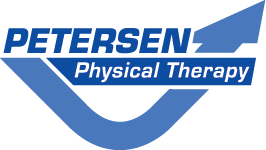One specialized service that comes up with our patients is physical therapy for weight loss. Since physical therapy isn’t typically thought of as an option for progress on a weight loss journey, we’ll discuss some of the nuances of when to choose physical therapy as a supplement to your weight loss journey.
Physical therapy can be used for weight loss by providing a safe and structured approach to increasing physical activity and helping individuals build strength, improve mobility, and reduce pain, making it easier to stay active and achieve weight loss goals.
In this article, we’ll cover what physical therapy can offer along a weight loss journey, when it might be a good idea, and discuss how to take a holistic approach to your weight loss process.
Can you go to physical therapy for weight loss
Depending on the individual context, you can go to physical therapy for weight loss. However, most physical therapy offices won’t look at physical therapy as a focus for a treatment plan – generally we’re focusing on individual musculoskeletal injuries.
That said, many physical therapy offices have weight loss programs. The reason for this is that it’s common for doctors or orthopedic specialists to request that a patient lose weight before a surgery that requires a particular body mass index (BMI) or simply as a health measure.
In this case, the physical therapist’s services are employed because they can help the patient get on a weight loss program while simultaneously doing a targeted exercise program to strengthen and prepare the areas for surgery.
Recommendations for physical therapy while trying to lose weight
Doing physical therapy while trying to lose weight is particularly beneficial for individuals preparing for a surgery or procedure where achieving a healthy body weight is a critical consideration.
A physical therapist can design a low-impact exercise program tailored to your specific needs and limitations, helping you lose weight safely while improving mobility and strength. By addressing joint pain, improving your functional fitness level, and promoting overall physical activity, physical therapy can make it easier to reach your weight-loss goals and enhance your readiness for surgery, reducing the risk of complications and improving postoperative outcomes.
Considerations for losing weight with physical therapy
Though your referring physician or orthopedist will likely denote on your prescription that weight loss is one of the goals of your therapy, there are a few things we ask of you if you’re planning on using physical therapy as an adjunct to a weight loss effort:
Communicate your goals
If weight loss is a goal for you, we highly recommend that you communicate this with your physical therapist during your initial evaluation for physical therapy. It’s not necessarily a given that we know this already, and we’ll make sure to modify your treatment plan to include exercises conducive to this goal.
Additionally, we can provide different education to patients who are interested in weight loss, such as how to incorporate lifestyle choices outside of your treatment plan.
Adopt a holistic approach
While we’d love to claim that we’re the be-all-end-all, we simply can’t; physical therapy is a holistic approach. No successful weight loss plan is completed without some type of diet component, and they generally also include some type of generalized exercise component as well.
Note that neither of these things necessary needs to be difficult. In fact, it’s much more important that you select diets and exercise plans that you can sustain over the long haul than for you to choose the “perfect” option. To that end, we generally recommend patients walk, and perhaps seek the help of a registered nutritionist along their journey as well.
This makes the plan holistic and multi-disciplinary by definition, and significantly increases your chances of success. If you’ve got a lot of weight to lose, see our guide on obesity and physical therapy for more specific direction on how to set up a holistic program.
If you’d like more information on how much exercise to get, see our full article on the Physical Activity Guidelines for Americans: how much exercise do I need?
Stay consistent
The last thing we ask of you is that you’re consistent. As mentioned above, almost nothing will matter more than consistency in your weight loss efforts.
That said, let’s define exactly what we mean by consistency:
- Keep your physical therapy appointments, to the best of your ability
- Stick to your diet, to the best of your ability
- Stick to your exercise plan, to the best of your ability
- DON’T stress if you miss a workout or miss an appointment. Consistency over the long haul is what we’re after, NOT perfection.
- If something about your plan isn’t working for you, discuss it with your therapist so we can make adjustments – it’s far more helpful to make tweaks along the way than it is to quit and have to start over again!
By working closely with your physical therapist, you can ensure your program is both effective for weight loss and safe for your body.
Physical therapy after weight loss
The alternative to direct weight loss physical therapy is to seek physical therapy after the successful completion of a weight loss program. For many reasons, this can be a good idea, not the least of which is that the mechanics of how you operate day to day may have changed!
Some retraining on your gait, balance, stability, strength, and mobility can go a long way to ensure that you get the most out of your weight loss journey, in addition to avoiding injury risk going forward. Additionally, physical therapy after weight loss can be very helpful in weight management moving forward.
Physical therapy can help you:
- Solidify your new “baseline” bodyweight
- Address postural changes resulting from your new body composition
- Build back strength and muscle mass to improve functionality and avoid injury
- Build back mobility and flexibility to ensure that you can complete daily activities
- Set new goals
- Maintain your new habits over the long term
A physical therapist can tailor your program to help you transition smoothly into a healthier, more active lifestyle while addressing any new challenges that arise post-weight loss.
A basic diet framework for losing weight during physical therapy
Since we don’t currently have a full article on weight loss, we’ll address it briefly here. However, we recommend that if you’re planning to lose weight during physical therapy, that you also work with a registered nutritionist or dietician who can provide recommendations specific to your situation.
Below is a basic diet framework for a patient trying to lose weight during physical therapy should focus on creating a calorie deficit while supporting recovery, energy, and overall health.
Note that we have, to the best of our ability, listed these in order of importance from most important to least important.
1. Monitor your energy balance (calorie intake)
- Determine a daily calorie goal slightly below maintenance (typically a 300-500 calorie deficit is safe and sustainable).
- Avoid extreme calorie restriction to ensure adequate energy for physical therapy and recovery.
2. Eat mostly whole, unprocessed foods
- Consume about 75-80% of your daily calories from whole, unprocessed foods like meats, fruits, vegetables, and whole grains.
- A good rule of thumb is to shop the “perimeter” of the grocery store, where the meats, fruits, and dairy are found!
3. Macronutrient balance
- Protein: We recommend targeting around .8 grams of protein per pound of bodyweight, per day.
- Prioritizing protein supports muscle repair and recovery, as well as creating the greatest sense of satiation from your diet.
- Good protein sources: Lean meats, fish, eggs, tofu, Greek yogurt, legumes, protein shakes.
- Carbohydrates and fats: The remainder of daily calories can be broken up to provide energy for therapy sessions.
- Good carbohydrate sources: Whole grains, sweet potatoes, quinoa, fruits, and vegetables.
- Good fat sources: Avocados, nuts, seeds, olive oil, fatty fish.
4. Foods to Minimize
- Sugary drinks and snacks.
- Highly processed foods.
- Excessive saturated fats or fried foods.
5. Meal structure
- Breakfast: High-protein and high-fiber options to start the day energized.
- Example: Scrambled eggs with spinach and whole-grain toast.
- Lunch: Balanced meal with lean protein, vegetables, and whole grains.
- Example: Grilled chicken salad with quinoa and olive oil dressing.
- Dinner: Light, nutrient-dense meal with protein and vegetables.
- Example: Baked salmon with steamed broccoli and roasted sweet potatoes.
- Snacks: Healthy, low-calorie options to keep hunger in check.
- Examples: Greek yogurt, nuts, fresh fruit, or veggie sticks with hummus.
Note that the particulars of the meal structures listed above may be counter to what you and your nutrition coach come up with; we recommend you defer to their expertise rather than trying to stick to the guidelines above.
6. Timing
- Eat small, balanced meals every 3-4 hours to stabilize energy levels and prevent overeating.
- Focus on a protein rich meal or snack within 1-2 hours after physical therapy to optimize recovery.
7. Hydration
- Aim for at least 8-10 glasses of water per day, more if exercising heavily or in warm climates.
- Include hydrating foods like fruits (e.g., watermelon, oranges) and vegetables.
8. Adjustments based on therapy
- If sessions are intense or involve significant physical exertion, adjust carbohydrate intake slightly upward to fuel performance.
- Monitor progress and tweak portions or food choices as needed, with input from your physical therapist or a dietitian.
This framework ensures adequate nutrition for healing and physical activity while promoting steady, sustainable weight loss.
Don’t discount physical therapy as an adjunct to weight loss
Physical therapy can be helpful in building a foundation for weight loss by addressing physical limitations and creating personalized exercise programs tailored to individual needs.
By focusing on mobility, strength, and overall well-being, we can empower patients to achieve their weight loss goals while reducing the risk of injury or setbacks.
Whether you’re starting your journey or overcoming specific challenges, physical therapy offers the guidance and support needed to build lasting, healthier habits and improve your quality of life.

















